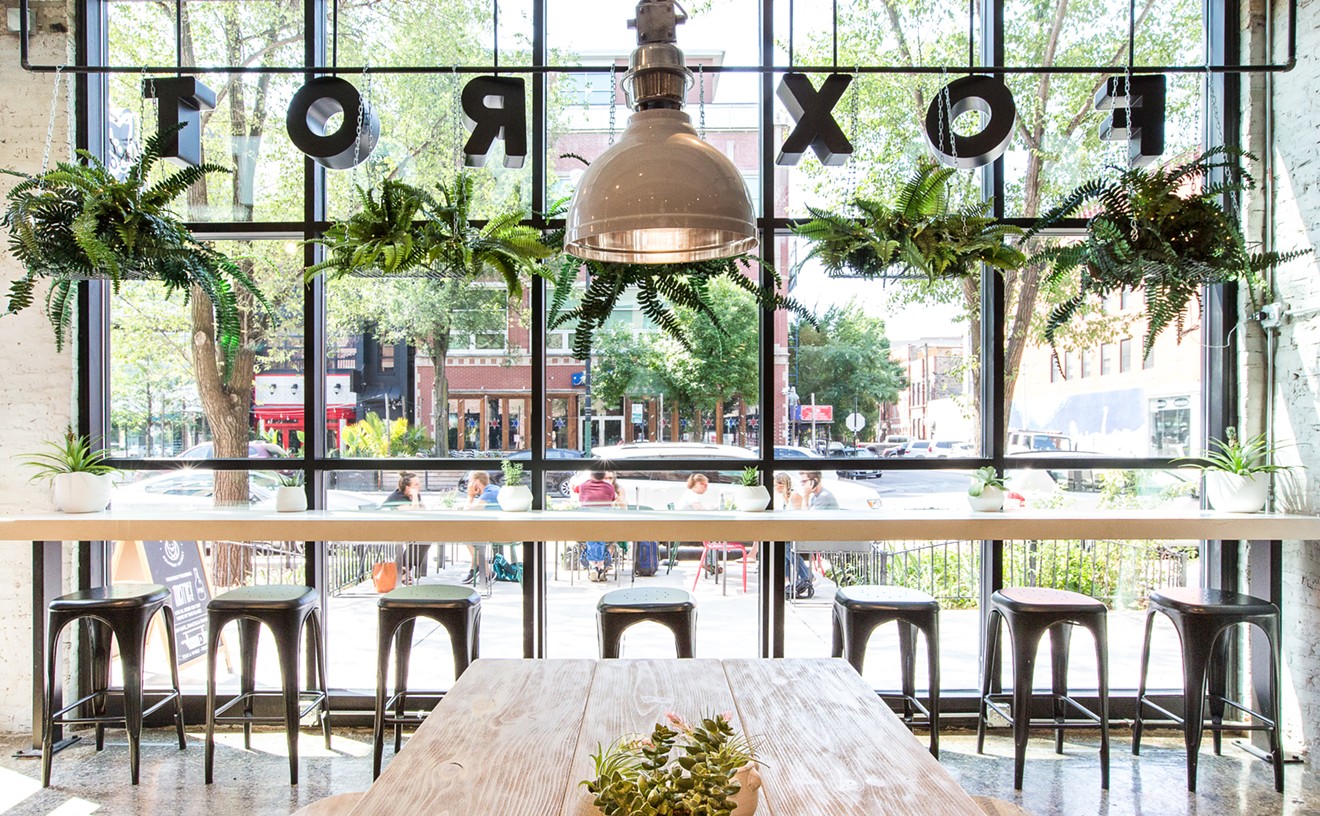Veracruz, a thin and wrinkly shaped state on the Gulf, wasn't the most loved state in Mexico. The Spanish used the region as a gateway to the New World, trouncing local tribes in search of gold. But they also brought along olives, capers, almonds and other treasures from home, imprinting a casual Mediterranean character upon the local cuisine. They chilled Mexican food out a little.
Raul and Olga Reyes lean heavily on this coastal cooking at Mesa, their second attempt at an Oak Cliff restaurant. They grew up in Alvarado, Veracruz, and learned their craft from grandparents steeped in local restaurants. Theirs is a more quiet cuisine than the Mexican popular in the United States, cooked with a familiarity and passion. It's more soulful than spicy. It's simple.
Fans of the family's work may remember the oceanic blue dining room of La Palapa Veracruzana, housed in the same Jefferson storefront as Mesa. It looked like the set for a high-school-produced underwater musical. Raul's son, who bears the same name, tells me that it was a missing liquor license, however, not a quirky décor that led to the restaurant's demise. This swath of Oak Cliff was completely dry a few years ago. But gentrification brings with it new people and new permits, and now the liquor flows.
Inside the small, sleek dining room, a selection of cocktails entices, fashioned from an apothecary of infused rums and tequila that line the back of the bar. The horchata — spiked with coconut-clouded rum and garnished with a stick of cassia — is intensely saccharine, as the rice-based drink often is in the States. But the margarita suffers from an excess of sweetness, a heavy-handed pour of Grand Marnier robbing the drink of its mouth-watering pucker. The other cocktails play with chili, hibiscus and other spicy and floral flavors.
The drinks are boozy, and the familiar Tex-Mex offering of chips and salsa doesn't belong here, so it's best to order a snack while you sip. The Surtido Veracruzano, a plate of assorted antojitos, provides an efficient way to get to know the flavors turned out by Mesa's kitchen. It's like speed-dating with small bites, a dish easily passed around the table. Enfrijoladas pair delicate corn tortillas with a seductive, earthy black bean puree, topped with crema and cheese. A deep-fried empanada hides a chewy and savory cheese, like a secret tucked within its sweet pastry.
But the picadas — small, handmade rounds of masa topped with red and green salsas and a little cheese — are boring, or at least the version that accompanies the starter plate is. Much better to order the tartlet trio as a standalone item from just down the menu. You'll receive an extra picada, slathered in mole, and can supplement them with chicken or shrimp, for $2 and $3 respectively. The chicken, cooked with tomatoes and onions, provides depth to the snack food.
The ceviche is a stunner, garnished with a few cubes of bright green avocado and micro cilantro, and served with expertly fried chips, sufficiently sturdy for scooping. The dish screams with an acidic brightness, a citrus that's almost overpowering and in danger of drowning out the subtle flavors from the sea. Yet there they are, my chip-wielding fingers hunting forlornly long after every morsel of shrimp and fish has been harvested, sifting through a soupy sea of carefully diced tomato and onion before contentedly scooping up the watery salsa that remains.
Ensalada de Jicama pairs cucumber and papaya with its crunchy namesake root vegetable in a salty lime-driven dressing. The salad is finished with the same cilantro garnish that crowns many of Mesa's dishes, along with a serious dusting of chili that adds more smoke than heat. My first taste gives me pause. The flavors meander and seem confused, but a bite laced with cilantro saves it. The lively, pungent herb ties the flavors together. I wonder if it would be better employed as an ingredient instead of an embellishment.
None of Mesa's food is terribly spicy, but Chilpachole de Jaiba y Camaron, a massive bowl of warm seafood stew, packs the most capsaicin. A crab, cleaved in half, lets fat and roe flavors mingle with the intense and salty broth. The shrimp and clams retain a pleasant chew, but each of the mussels is soft, melting unpleasantly with little resistance. If the Reyes want to take you to Veracruz, they've done it with a rustic stew.
Tucked into a worn-out strip on Jefferson, on a stretch of road dotted with grungy Tex-Mex that can give squeamish diners pause, Mesa's dining room is clean, bright and modern, without feeling stuffy or forced. Orange and browns dominate a color scheme offset by a gray concrete bar that mirrors the weathered wood lining an adjacent wall. The reclaimed lumber, silvered by moisture and time, seems serious when compared to the playful cacti that jut from the brick wall near the entrance, colorful blossoms alight. The room straddles the genres perfectly, providing authenticity for those who want decent Mexican without a side of $8 salsa. This isn't fine dining, but it's comfortable dining. The space is refined enough for a marked occasion, but relaxed enough for a quick pit stop before heading home.
Despite a room filled with hard surfaces, dining here is relatively quiet, even when the space is full. Mesa seats at most 40 patrons, including the stools that line the bar. Each group retains its intimacy; a table of eight younger women celebrating nearby isn't the slightest nuisance. And if demand grows for the family's Veracruz imports, there's plenty of room for more tables, and for the wait staff to shuttle out oxtail and handmade tortillas or Mesa's quietly flavored mole tinged with spice and chocolate.
The Rabo de Res al Acuyo is an oxtail dish risen from the ashes of La Palampa Veracruzana. I use my fork to pull the meat from the bone, mix it with a little sauce on the plate and eat it with my hands using tortillas. The earthy and oxidized green sauce, based on the herb hoja santa, is rich but missing ... something. I grab the lime from the side of my water glass, hover it over my plate and give it a hearty squeeze.
There we go. That brightens things.
You can get similar results by requesting a cream-colored habanero hot sauce. It's not on the menu, but it's available if you ask, served in a small white bowl and ready to awaken anything you find too sleepy for your taste.
If you're craving sweet, the flan is a vanilla-tinged and dense custard, more like a cheesecake than softer silky versions. But it's the arroz con leche that sets me on end, not because it's the best rice pudding I've had but because it's a near carbon copy of a dessert from my past. The soupy pudding, heavy with that sweet condensed-milk flavor, lacks only that funky brown skin that graced my mom's casserole.
For better or worse, that dish closed most special meals I ate growing up on the East Coast. It's sweet and topped with swollen raisins macerated in rum, and it invokes one of those strange food memories that transports you somewhere else. Not Veracruz this time, but, in this dish anyway, the Reyeses do my home as well as they do their own.










